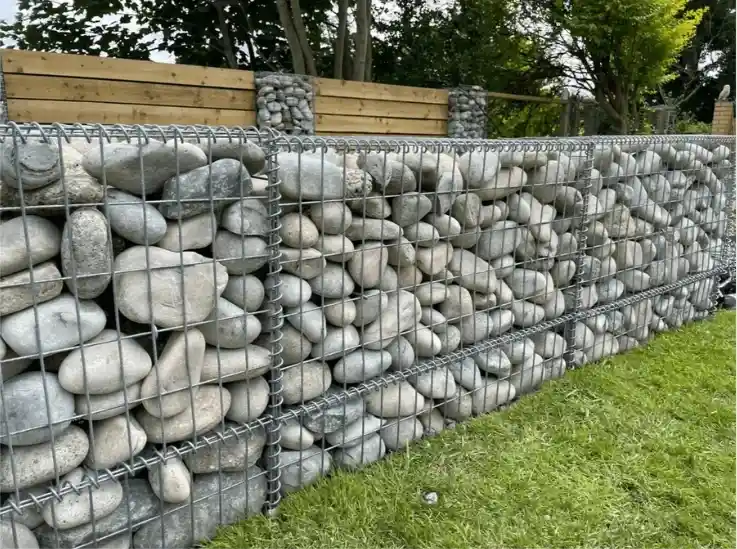Dec . 25, 2024 19:13 Back to list
Innovative Reinforcement Techniques for Highway Mesh Concrete Structures and Durability Enhancement
Highway Mesh Concrete Reinforcement Strengthening Infrastructure for the Future
Highways are the veins of modern transportation systems, facilitating the movement of goods, services, and people across vast distances. As such, the durability and reliability of highway infrastructure are paramount. One crucial aspect of highway construction is the use of mesh concrete reinforcement, a technique that enhances the strength, longevity, and performance of these critical roadways.
The primary purpose of concrete reinforcement is to improve the tensile strength of concrete, which is naturally strong in compression but weak in tension. This imbalance makes concrete susceptible to cracking and structural failure when subjected to heavy loads or environmental stresses. To combat this issue, engineers and construction professionals have turned to a variety of reinforcement techniques, one of which is the use of mesh.
What is Mesh Concrete Reinforcement?
Mesh concrete reinforcement involves embedding a grid-like structure made of steel bars or wires within the concrete. Typically, this mesh is laid out in sheets and placed at strategic intervals within the concrete pour. The mesh serves to distribute loads more evenly throughout the concrete slab, providing enhanced tensile strength and reducing the risk of cracks extending through the surface.
Advantages of Mesh Reinforcement in Highways
1. Increased Load Bearing Capacity One of the key benefits of using mesh reinforcement in highway construction is the increased load-bearing capacity. The steel mesh absorbs tensile forces that occur when vehicles pass over, allowing the concrete to perform more effectively under heavy weights.
2. Crack Control Cracks can develop in concrete due to various factors, including thermal expansion, shrinkage, and overloading. Mesh reinforcement provides a means of controlling these cracks by redistributing stresses throughout the concrete matrix, preventing them from propagating and causing more severe damage.
3. Durability and Longevity Highways are exposed to harsh environmental conditions, including temperature fluctuations, moisture, and chemical exposure from de-icing agents. The use of mesh reinforcement can significantly extend the life of highway surfaces by ensuring they better withstand these adverse conditions.
highway mesh concrete reinforcement

4. Cost-Effectiveness While the initial cost of using mesh reinforcement may be higher than traditional unreinforced concrete, the long-term benefits often outweigh the initial investment. Reduced maintenance costs, enhanced durability, and longer service life contribute to overall savings in highway construction and upkeep.
Practical Applications and Considerations
When implementing mesh concrete reinforcement in highway construction, several considerations must be taken into account. The type and grade of mesh utilized will depend on factors such as expected traffic loads, environmental conditions, and the specific design of the highway.
Additionally, the placement of the mesh within the concrete is critical. Proper positioning ensures that the mesh provides optimal reinforcement where it is needed most. Typically, the mesh should be placed in the middle or slightly lower third of the slab to ensure effective load distribution.
Innovations in Mesh Technology
Recent advancements in material science have led to the development of new types of mesh reinforcement. Fiber-reinforced polymer (FRP) meshes, for instance, offer a lightweight alternative to traditional steel mesh, providing resistance to corrosion and making them ideal for environments prone to chemical exposure. These innovative materials are being incorporated into modern highway designs, enhancing performance while also addressing environmental concerns.
Conclusion
As urban populations grow and the demand for efficient transport systems increases, the importance of robust highway infrastructure becomes more pronounced. Mesh concrete reinforcement stands as a fundamental technology that helps meet these needs by enhancing the strength, durability, and overall performance of highway systems. By investing in advanced materials and techniques, we can ensure that our highways not only support current transportation demands but are also resilient enough to face future challenges. As we continue to innovate and improve construction methodologies, mesh reinforcement will likely play an integral role in shaping the highways of tomorrow.
-
Reinforcing Mesh: Core Material of the Construction Industry
NewsJul.07,2025
-
Welded Wire Fabric Reinvented for Modern Projects
NewsJul.04,2025
-
Superiority of Stainless Steel Woven Mesh
NewsJul.04,2025
-
Key Types of Razor Wire and Their Applications
NewsJul.04,2025
-
Durable Metal Fence Types for Security
NewsJul.04,2025
-
Best Materials for Livestock Fence
NewsJul.04,2025
products.







